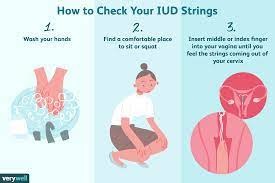Mental health is an important issue for all genders, but men often face unique challenges when it comes to seeking help. Men are often expected to be strong and stoic, and this can lead to a reluctance to seek help for mental health issues. This can be especially true for men of color, who may face additional stigma due to cultural expectations. It is important to break down the stigma around mental health and men, and to create an environment where men feel comfortable seeking help. By creating a safe and supportive space, men can get the help they need to manage their mental health and lead healthier, happier lives.
How Men Can Overcome the Stigma of Mental Health Issues
Mental health issues are a growing concern in today’s society, and men are particularly vulnerable to the stigma associated with them. The stigma of mental health issues can be a major barrier to men seeking help and support. Fortunately, there are steps men can take to overcome this stigma and get the help they need.
First, it is important to recognize that mental health issues are not a sign of weakness. Mental health issues can affect anyone, regardless of gender, age, or background. It is important to understand that seeking help is a sign of strength, not weakness.
Second, it is important to talk about mental health issues openly and honestly. Men should not be afraid to talk about their mental health issues with friends, family, or a mental health professional. Talking about mental health issues can help to reduce the stigma associated with them.
Third, men should seek out support from others. This could include joining a support group, talking to a therapist, or even just talking to a friend. Having a support system can help men to feel less alone and more empowered to seek help.
Finally, men should take care of themselves. This includes getting enough sleep, eating a healthy diet, exercising regularly, and engaging in activities that bring joy and relaxation. Taking care of oneself can help to reduce stress and improve mental health.
By taking these steps, men can overcome the stigma of mental health issues and get the help they need. Mental health is an important issue, and it is essential that men take steps to address it.
The Benefits of Mental Health Support Groups for Men
Mental health support groups for men can provide a variety of benefits to those who participate. These groups can provide a safe and supportive environment for men to discuss their mental health issues and to receive support from others who are going through similar experiences. By participating in a mental health support group, men can gain insight into their own mental health issues, learn coping strategies, and develop a sense of community.
One of the primary benefits of mental health support groups for men is the opportunity to share experiences and feelings with others who are going through similar struggles. This can be especially beneficial for men who may feel isolated or ashamed of their mental health issues. By talking openly and honestly with other men in the group, participants can gain a better understanding of their own mental health issues and learn how to better manage them.
In addition to providing a safe and supportive environment for men to discuss their mental health issues, mental health support groups can also provide practical advice and coping strategies. Group members can share their own experiences and offer advice on how to better manage mental health issues. This can be especially helpful for men who may not have access to professional mental health services.
Finally, mental health support groups can provide a sense of community and belonging. By participating in a group, men can develop meaningful relationships with other men who are going through similar struggles. This can be especially beneficial for men who may feel isolated or alone in their mental health struggles.
Overall, mental health support groups for men can provide a variety of benefits. By participating in a group, men can gain insight into their own mental health issues, learn coping strategies, and develop a sense of community. For these reasons, mental health support groups can be an invaluable resource for men who are struggling with mental health issues.
Conclusion
Mental health is an important issue for men, and it is essential that we break the stigma associated with it. Men need to be encouraged to talk about their mental health and seek help when needed. Mental health services should be made more accessible and affordable for men, and more education should be provided to help men understand the importance of mental health and how to take care of it. By breaking the stigma and creating a more open dialogue about mental health, we can help men lead healthier and happier lives.
 Paragard IUD has given women the convenience of planning their families. However, the device can break within their bodies during the removal process. In addition, patients and doctors have cited that Paragard’s one or both arms get broken during removal and lodge in the uterus.
Paragard IUD has given women the convenience of planning their families. However, the device can break within their bodies during the removal process. In addition, patients and doctors have cited that Paragard’s one or both arms get broken during removal and lodge in the uterus.